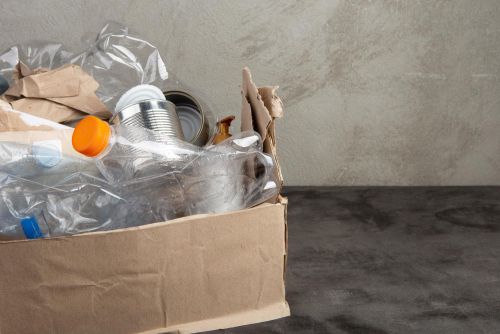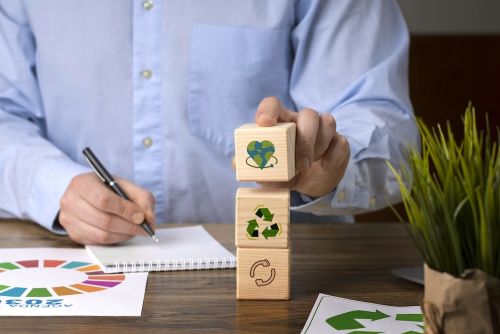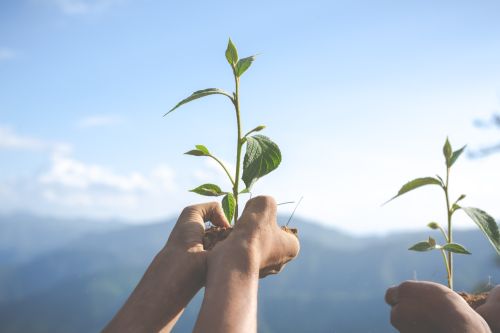Chevron Gorgon Project: Australia's LNG Mega-Project


Cut through the green tape
We don't push agendas. At Net Zero Compare, we cut through the hype and fear to deliver the straightforward facts you need for making informed decisions on green products and services. Whether motivated by compliance, customer demands, or a real passion for the environment, you’re welcome here. We provide reliable information—why you seek it is not our concern.
Overview
The project is operated by Chevron, which holds approximately 47.3% interest. Other major partners include ExxonMobil (25%), Shell (25%), as well as smaller stakes held by Japanese companies Osaka Gas, Tokyo Gas, and Chubu Electric Power.
The project is located on Barrow Island, which is a Class A Nature Reserve, meaning it is a highly protected area with strict environmental regulations.
The total cost of the Gorgon Project was originally estimated at around $37 billion but has since ballooned to over $54 billion due to delays, cost overruns, and other challenges.
Key Components
Gas Fields: The Gorgon and Jansz-Io gas fields are located in the Greater Gorgon Area in the Carnarvon Basin, offshore Western Australia. These fields contain an estimated 40 trillion cubic feet of gas.
LNG Production: The project includes the construction of three liquefied natural gas (LNG) trains, each with a capacity of 5.2 million tonnes per year, making the total capacity around 15.6 million tonnes per year.
Domestic Gas Plant: Besides LNG production for export, the project also includes a domestic gas plant that supplies natural gas to the Western Australian market.
CO2 Injection Project: A significant feature of the Gorgon Project is its carbon dioxide injection project, which is one of the world's largest. This involves the capture of CO2 produced alongside natural gas, which is then injected into deep underground reservoirs beneath Barrow Island. The goal is to reduce the project's greenhouse gas emissions.
Discovery of the Gorgon Gas Fields
The Gorgon gas fields were first discovered in the early 1980s, marking the beginning of what would eventually become one of the world's largest and most complex natural gas projects.

Timeline of Key Events
1981: The Gorgon gas field was discovered by West Australian Petroleum Pty Ltd (WAPET), a joint venture that included Chevron, Shell, and BP. This discovery was followed by the identification of the Jansz-Io field in 2000, located about 130 kilometres west of Barrow Island, further adding to the potential of the project.
1994: Initial feasibility studies began for the development of the Gorgon field. However, due to the remoteness of the fields and the challenges associated with developing such a large-scale project, progress was slow.
2003: The Gorgon Joint Venture was officially formed, comprising Chevron, ExxonMobil, Shell, and other partners. This formalized the collaborative effort to develop the gas fields and build the necessary infrastructure.
2005: The Australian federal government granted environmental approval for the Gorgon Project, allowing the development to proceed on Barrow Island, a Class A Nature Reserve. This approval came with stringent environmental conditions to protect the island's ecosystem.
2007: Chevron announced the discovery of additional gas resources in the Jansz-Io field, which would be integrated into the Gorgon Project. This bolstered the project’s resource base and justified further investment.
2009:
September: Chevron and its partners made the final investment decision (FID) to proceed with the Gorgon Project. The FID represented a significant milestone, with an initial cost estimate of $37 billion. This decision came after years of planning, regulatory approvals, and securing long-term contracts with customers, particularly in Asia.
November: Construction officially began on Barrow Island, with the development of infrastructure such as the LNG plant, pipelines, and subsea facilities.
2014: The project was hit by significant delays and cost overruns, with the budget revised to over $54 billion. These issues stemmed from a combination of technical challenges, harsh weather conditions, and logistical complexities associated with working in a remote and environmentally sensitive area.
2016:
March: The first LNG production from the Gorgon Project commenced, marking a major achievement after years of challenges. The first LNG cargo was shipped to Japan, one of the project’s key customers.
December: Full production capacity was reached as all three LNG trains became operational.
Project Delays and Cost Overruns
Causes of Delays
Technical Challenges:
The project required the installation of extensive subsea pipelines and facilities, some of the most advanced in the world. The technical complexity of laying pipelines in deep water and connecting remote gas fields to the LNG plant on Barrow Island contributed to delays.
Building three LNG trains on an isolated island posed significant challenges. The construction required the importation of vast amounts of materials and equipment, often from overseas, which led to logistical bottlenecks.
Regulatory Hurdles:
Barrow Island’s status as a Class A Nature Reserve meant that Chevron had to adhere to strict environmental regulations. Meeting these requirements, such as protecting the island’s unique wildlife and ecosystems, added complexity and time to the project.
Securing the necessary permits for construction and operation was a lengthy process, involving multiple layers of government oversight and public consultations.
Market Conditions:
The final investment decision was made during a period of global economic uncertainty following the financial crisis (2008-2009). While the decision proceeded, the crisis had lingering effects on capital availability, cost of materials, and investor confidence.
The project was initially planned when LNG prices were relatively high. However, as the project progressed, global LNG prices became more volatile, putting pressure on the project's financial metrics and timelines.
Logistical Issues:
The remoteness of Barrow Island presented significant logistical challenges. All materials, equipment, and personnel had to be transported to the island, leading to delays, especially during adverse weather conditions.
Western Australia experienced labour shortages during the construction phase due to a booming mining industry. This competition for skilled workers led to higher costs and delays in project timelines.

Impact of Delays and Overruns
The initial budget of $37 billion was significantly exceeded, with the final costs estimated at over $54 billion. This increase was due to a combination of the factors mentioned above, as well as unanticipated technical difficulties and regulatory compliance costs.
The project was originally expected to commence production in 2014, but the first LNG was not produced until 2016. This two-year delay impacted the project’s financial returns and delayed revenue generation for the partners.
The delays and cost overruns attracted criticism from investors, analysts, and the public. Chevron and its partners had to manage expectations and justify the additional costs to stakeholders.
Comparison with Other Major LNG or Energy Projects Globally
The Chevron Gorgon Project is one of the largest and most complex LNG projects in the world. When comparing it to other major LNG or energy projects globally, several factors make the Gorgon Project unique, particularly in terms of its scale, technological advancements, and environmental management. Below is a comparison with some of the most significant LNG and energy projects worldwide:
Scale and Capacity
Gorgon Project:
LNG Production Capacity: 15.6 million tonnes per annum (MTPA) from three LNG trains.
Gas Reserves: Approximately 40 trillion cubic feet (TCF) of gas.
Investment: Initially estimated at $37 billion, with final costs exceeding $54 billion.
Comparative Projects:
QatarEnergy LNG (Qatar):
LNG Production Capacity: Over 77 MTPA from 14 LNG trains (across various projects).
Scale: QatarEnergy is the largest LNG producer in the world, benefitting from Qatar’s vast North Field, the world's largest non-associated natural gas field.
Investment: Cumulatively tens of billions of dollars across multiple phases and projects.
Comparison: While QatarEnergy surpasses Gorgon in overall production capacity, Gorgon’s per-train capacity is competitive, and its environmental focus distinguishes it.
Yamal LNG (Russia):
LNG Production Capacity: 16.5 MTPA from three trains.
Location: Yamal Peninsula in the Russian Arctic, characterized by extreme conditions.
Investment: Around $27 billion.
Comparison: Yamal LNG shares similarities with Gorgon in terms of the challenging environment, but Gorgon’s remote island location and stringent environmental conditions set it apart.
Environmental Management
Gorgon Project:
Located on a Class A Nature Reserve, the Gorgon Project faced some of the strictest environmental regulations in the world. Chevron implemented extensive measures to protect the island’s ecosystem, including a comprehensive quarantine management system to prevent the introduction of non-native species.
The project’s CCS component is one of the largest of its kind, aimed at reducing the project’s carbon footprint by capturing and storing CO2 produced during gas processing.
Chevron undertook significant efforts to monitor and protect the local fauna and flora, ensuring minimal environmental impact on Barrow Island.
Comparative Projects:
Ichthys LNG (Australia):
Environmental Challenges: Like Gorgon, Ichthys faced environmental scrutiny, particularly concerning the offshore production facility and the subsea pipeline to Darwin.
Environmental Management: While Ichthys has robust environmental measures, it does not have a CCS project as extensive as Gorgon’s, nor is it located in an area as environmentally sensitive as Barrow Island.
Comparison: Gorgon stands out for its advanced environmental management practices, particularly in CCS and biodiversity protection, which are unparalleled among its peers.
Tangguh LNG (Indonesia):
Indigenous Engagement: Tangguh LNG is noted for its efforts in engaging with and benefiting local indigenous communities, including environmental stewardship.
Environmental Impact: While Tangguh has a strong focus on minimizing environmental impact, it does not match Gorgon in scale or technological advancements in environmental management.
Comparison: Gorgon’s focus on CCS and its location in a protected area makes its environmental management practices more advanced compared to Tangguh.
What Makes the Gorgon Project Unique?
The Gorgon Project is one of the largest single-resource LNG projects globally, executed in one of the most challenging and environmentally sensitive areas—a remote, protected island.
Gorgon’s CCS project is a pioneering effort in reducing the carbon footprint of large-scale energy projects. It represents one of the largest and most ambitious CO2 injection projects globally, setting a benchmark for future energy developments.
The project’s location on Barrow Island, a Class A Nature Reserve, necessitated some of the most stringent environmental management practices ever implemented for a resource project. The extensive quarantine and biodiversity protection measures demonstrate a high level of commitment to environmental stewardship.
The complexity of the subsea infrastructure and the scale of the LNG trains highlight Gorgon’s technological leadership. Its advanced engineering solutions for deepwater gas extraction and onshore processing are among the most sophisticated in the world.
Future Prospects of the Gorgon Project
As global demand for LNG continues to rise, particularly in Asia, the Gorgon Project is well-positioned to capitalize on this growth. Countries like China, Japan, and South Korea, which are major LNG importers, are likely to remain key markets. With a projected operational lifespan of 40 years, the Gorgon Project is expected to continue providing stable and substantial LNG supplies to these markets, ensuring its role as a cornerstone of Chevron's portfolio and Australia's energy exports.
However, the project also faces challenges and opportunities related to the global energy transition. As the world increasingly shifts toward renewable energy and decarbonization, the Gorgon Project’s future may be influenced by its ability to adapt to these changing dynamics. The carbon dioxide injection system, which is one of the largest of its kind in the world, is a critical component of the project's strategy to reduce its carbon footprint. As environmental regulations tighten and the pressure to reduce emissions grows, Chevron's commitment to enhancing the efficiency and effectiveness of this CO2 injection system will be crucial in maintaining the project's viability and social license to operate.
In the long term, the Gorgon Project may explore opportunities for expansion or technological upgrades to improve efficiency and environmental performance. This could include the development of additional gas fields within the Greater Gorgon Area or the incorporation of emerging technologies such as carbon capture and utilization (CCU).

More related content

Extended Producer Responsibility (EPR) for Packaging: Country-by-Co...

What Is Scope 3? Understanding Indirect Emissions and Their Regulat...

The EU's Omnibus Proposal: A Deep Dive
